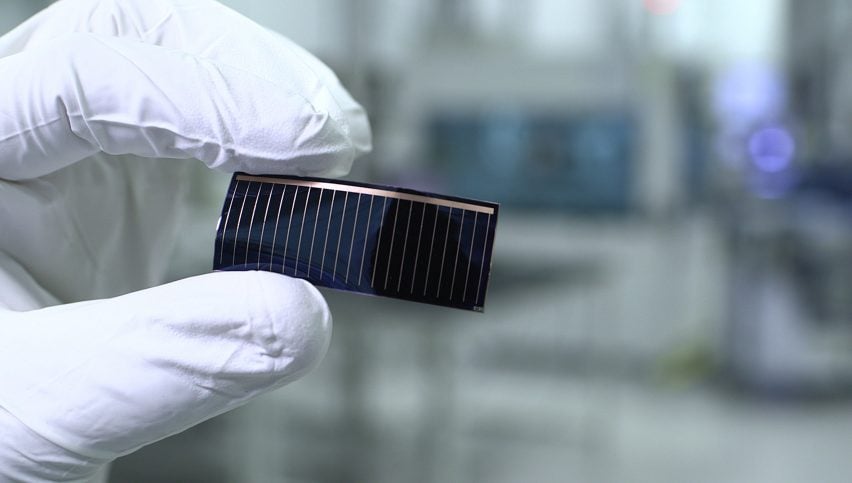Audi set to unveil car with solar roof by end of 2017
German automaker Audi is working with Chinese solar-cell specialist Hanergy to develop thin-film solar cells that can be integrated into the panoramic glass roofs of its cars.
Audi says that the integrated cells – which are being developed with Hanergy subsidiary Alta Devices – will generate solar energy for electric vehicles. The generated power would be used to supply systems such as air-conditioning or seat heaters, increasing the range of the electric cars.
The first joint prototype is expected to be ready by the end of 2017. Audi told Dezeen that it will then start an intensive testing phase to check whether the prototype fulfils its technical requirements in terms of safety, quality, robustness and environmental protection.
"The range of electric cars plays a decisive role for our customers," commented Audi's board member Dr Bernd Martens. "Together with Hanergy, we plan to install innovative solar technology in our electric cars that will extend their range and is also sustainable."
The marque also stated that in the future, the solar cells could cover almost the entire roof surface, and at a later stage, solar energy could directly charge the traction battery – which powers the propulsion of the vehicle.
"That would be a milestone along the way to achieving sustainable, emission-free mobility," continued Martens.
Thin and flexible, the solar cells are produced by Alta Devices in California from gallium arsenide and have an efficiency of more than 25 per cent. According to Audi, they also perform very well in conditions of low light and high temperature.

"Gallium arsenide crystals are widely used in the semiconductor industry because they have unique physical and chemical properties, which make them particularly efficient to convert natural sunlight into clean electricity and hence ideal for use in solar cells," a spokesperson from Audi told Dezeen. "The solar cells from Hanergy are very efficient, so we anticipate an output of approximately 250 watts per square metre."
"Take as an example an electric car with a solar panorama roof with a size of one square metre. If this car stands on a parking lot in good weather during an eight-hour working day, the owner could use solar energy to drive up to 13 kilometres on the way home."
In 2015, Audi's head of experiential marketing Bernhard Neumann told Dezeen that the cars of the future may not be electric, and that other power sources including fuel cells may turn out to be more effective than batteries.
But last month Audi announced it is aiming to cut costs by €10 billion (£8.9 billion) before 2022 in order to help fund a shift to electric cars.
Introduced in 2009 under the name 'Audi e-tron', Audi's family of electric and hybrid cars currently includes two plug-in hybrids: the Audi A3 Sportback e-tron and Q7 e-tron. In June the marque announced that three new electric vehicles will be added to its e-tron family by 2020.
Following this, the brand plans to release an electric version of each of its core vehicles, including a driverless city car by 2021. The short-term goal for Audi is to have at least 30 per cent fully or partially electric sales by 2025.
Audi was ranked at number 82 on Dezeen Hot List, a data-based power-ranking of the most influential players in architecture and design.